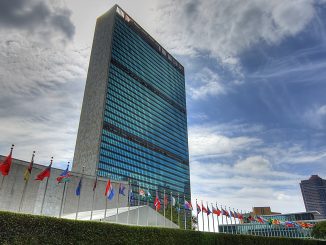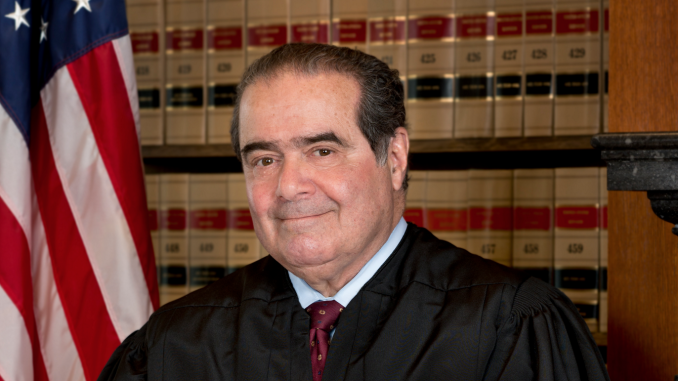
Antonin Scalia
was a first-time guest to the Cibolo Creek Ranch, near the small town of Marfa, Texas. He was also a supreme court judge.
Now he’s dead. But his death has WAY too many peculiarities to just wash away and ignore.
Marfa is a city with only 1,981 people, located in the high desert of far West Texas, located between the Davis Mountains and Big Bend National Park. It’s the county seat of Presidio County. It’s very far from any major city.
Scalia
was just the latest guest to visit the celebrity hideaway that covers 30,000 acres near the Chinati Mountains.
Mick Jagger, Julia Roberts and Tommy Lee Jones have also visited the scenic luxury accommodations.
Justice Antonin Scalia
was one of three dozen invited to an event that had nothing to do with law or politics, according to Houston businessman John Poindexter, who owns the 30,000-acre luxury ranch.
U.S. Supreme Court Justice Antonin Scalia was “animated and engaged during dinner Friday night,” Poindexter said.
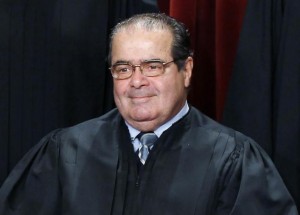 Just hours later, he would be found dead of alleged apparent natural causes, which media outlets were reporting Sunday was a heart attack.
Just hours later, he would be found dead of alleged apparent natural causes, which media outlets were reporting Sunday was a heart attack.
“He was seated near me and I had a chance to observe him. He was very entertaining. But about 9 p.m. he said, “it’s been a long day and a long week, I want to get some sleep,” recalled Houston businessman John Poindexter.
Scalia, who was scheduled to return to Washington on Sunday. Poindexter said he had only met Scalia once before briefly, in Washington.
Scalia came to the ranch because he was friends with another guest. Poindexter said he knew the other guests.
“All the guests were friends of mine, I paid for all of them. There were no politics, no jurisprudence in the slightest,” he said.
“This was strictly a group of friends that the judge decided to join. He was coming with his son who had to “drop out” for reasons I don’t know.”
“It was an honor to have him. He was widely admired. There were no speeches. He wasn’t asked any hard questions, it was all about the outdoors and Texas, and what it’s like being a Supreme Court Justice,” he said.
When Poindexter tried to awaken Scalia about 8:30 the next morning, the judge’s door was locked and he didn’t answer.
Three hours later, Poindexter returned after an outing, with a friend of Scalia who had come from Washington with him.
“Everything was in perfect order. He was in his pajamas, peacefully, in bed,” Poindexter said.
“We discovered the judge, a pillow over his head. His bed clothes were unwrinkled,” said Poindexter.
“He was lying very restfully. It looked like he had not quite awakened from a nap,” he said.
Scalia,79, did not have a pulse and his body was cold, and after consulting with a doctor at a hospital in Alpine, Poindexter concluded resuscitation would have been futile, He then contacted federal authorities, at first encountering a series of answering services because he was calling on a weekend.
“Ultimately they became available and handled it superbly. They flew in by helicopter. They told me to secure the ranch, which I did until this morning,” he said.
“All of us here saw him as a stalwart defender of our way of life in Texas, in a real sense,” he said.
“It’s a great loss. Having made that statement, if it was his time to go, he was surrounded by friends, in fairly nice setting, with a full tummy too. He said he was very happy to be invited so it could have been in worse circumstances,” he said.
“It’s caused all of us here to stop and think about life, how precious it is, and how it is so unexpectedly lost,” he added.
The body of the Supreme Court justice was moved to an El Paso funeral home early Sunday.
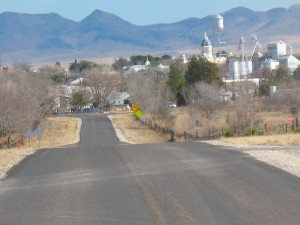 The body was driven from Marfa and arrived around 2:30 a.m. at Sunset Funeral Homes, according to spokesman Chris Lujan.
The body was driven from Marfa and arrived around 2:30 a.m. at Sunset Funeral Homes, according to spokesman Chris Lujan.
Lujan said the funeral home was chosen by family of the justice, and at the advice of a family friend.
The El Paso County medical examiner’s office said they hadn’t received any information regarding the possibility of performing an autopsy.
A Texas judge declined to order an autopsy for Supreme Court Justice Scalia after she says, she was assured the cause of death was a heart attack.
Presidio County Judge Cinderella Guevara says she turned down the procedure Saturday after Presidio County Sheriff Danny Dominguez said “there were no signs of foul play.”
According to CNN, the Scalia family also made the same decision.
The sheriff and the U.S. Marshal were asked, “Were there any signs of foul play?” And they said, ‘absolutely not.’
Guevara stated that Scalia’s doctor had informed her that Scalia had visited him “for a shoulder injury last week” but “also suffered from several chronic ailments.”
“When [the physician] explained Scalia had just visited on Wednesday and Thursday and [the doctor] had done an MRI, then I felt comfortable what I knew was going on with him physically,” the judge said.
Guevara, who did not see the body, indicated that Scalia’s death certificate would include myocardial infarction as the “official cause of death.”
Another justice of peace told The Washington Post she “would have undoubtedly ordered an autopsy” if in the same position.
“If it had been me . . . I would want to know,” Juanita Bishop, a justice of the peace in Presidio, Tex., told The Post.
“As late as Sunday afternoon, there were conflicting reports about whether an autopsy would be performed, though officials later said Scalia’s body was being embalmed and there would be no autopsy,” The Post reported.
Given the high-profile status of Scalia, questions should be raised regarding the “decision” as well as the “almost-immediate claim of no foul play.”
A former D.C. homicide commander is raising questions about how the death was handled by “local and federal authorities.”
“I am stunned that no autopsy was ordered for Justice Scalia,” William O. Ritchie, former head of criminal investigations for D.C. police, wrote in a post on Facebook on Sunday.
It took hours for authorities to find a justice of the peace, who pronounced him dead of natural causes without seeing the body!
 On Sunday, the U.S. Marshals Service, which provides security for Supreme Court justices, said that “Scalia had declined a security detail while at the ranch,” so marshals were not present when he died.
On Sunday, the U.S. Marshals Service, which provides security for Supreme Court justices, said that “Scalia had declined a security detail while at the ranch,” so marshals were not present when he died.
When the marshals were notified, deputy marshals from the Western District of Texas went to the scene.
Presidio County Judge Cinderela Guevara said she declared Scalia dead based on information from law enforcement officials on the scene, who assured her that “there were no signs of foul play.”
One law enforcement expert wrote, “You have a Supreme Court Justice who died, not in attendance of a physician.” “You have a non-homicide trained US Marshal tell the justice of peace that no foul play was observed.
You have a justice of the peace pronounce death while not being on the scene and without any medical training opining that the justice died of a heart attack.
What medical proof exists of a myocardial Infarction? Why not a cerebral hemorrhage?”
In an interview with The Washington Post, Guevara has said she rebutted a report by a Dallas TV station that Scalia had died of “myocardial infarction.” She said she meant only that his heart had stopped.
What about the marshals’ actions:
“How can the Marshal say, without a thorough post mortem, that he was not injected with an illegal substance that would simulate a heart attack…”
“Did the US Marshal check for petechial hemorrhage in his eyes or under his lips that would have suggested suffocation?
Did the US Marshal smell his breath for any unusual odor that might suggest poisoning? My gut tells me something fishy happened in Texas.”
A spokesman for the marshals service said Monday that the marshals did not make a formal determination of death. He directed questions to the county judge who made the call.
Scalia’s physician, Brian Monahan, is a U.S. Navy rear admiral and the attending physician for the U.S. Congress and Supreme Court.
He declined to comment on Scalia’s health when reached by telephone Monday at his home in Maryland.
“Patient confidentiality forbids me to make any comment on the subject,” he said. What a perfect excuse to plead the the 5th!
When asked whether he planned to make public the statement he’s preparing for Guevara, Monahan repeated the same statement and hung up on a reporter.
One of two other officials who were called but couldn’t get to Scalia’s body in time said that she would have made a different decision on the autopsy.
“If it had been me . . . I would want to know,” Juanita Bishop, a justice of the peace in Presidio, Tex., said in an interview Sunday of the chaotic hours that followed after Scalia’s death.
Emergency personnel and officials from the U.S. Marshals Service were called to the scene, then two local judges who also serve as justices of the peace, Guevara said.
Both were out of town, she said — not unusual in a remote region where municipalities are miles apart.
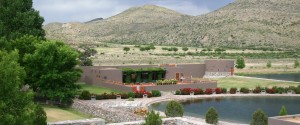 Guevara also was out of town, but she said she agreed to declare Scalia dead based on the information from law enforcement officials and Scalia’s doctor, citing Texas laws that permit a justice of the peace to declare someone dead without seeing the body.
Guevara also was out of town, but she said she agreed to declare Scalia dead based on the information from law enforcement officials and Scalia’s doctor, citing Texas laws that permit a justice of the peace to declare someone dead without seeing the body.
On Saturday evening, Scalia’s body was loaded into a hearse and escorted to the Sunset Funeral Home in El Paso by a procession of about 20 law enforcement officers.
It arrived there about 2:30 a.m. Sunday, according to funeral home manager Chris Lujan. The funeral home is about 3 1/2 hours from the ranch where Scalia died.
About 3:30 a.m. Sunday, Scalia’s family declined to have an autopsy performed, Lujan said, so the body was being prepared for Scalia’s funeral and was expected to be transported to Washington on Monday.
Late Sunday, it was under guard by six law enforcement officials, including U.S. marshals and Texas state troopers, he said.
Veteran homicide investigators in New York and Washington, DC, on Monday questioned the way local and federal authorities in Texas handled the death of Supreme Court Justice Scalia.
“It’s not unreasonable to ask for an autopsy in this case, particularly knowing who he is,” retired Brooklyn homicide Detective Patricia Tufo told The Post.
“He’s not at home. There are no witnesses to his death, and there was no reported explanation for why a pillow is over his head,” Tufo said. “So I think under the circumstances it’s not unreasonable to request an autopsy.
Despite the fact that he had pre-existing ailments and the fact that he’s almost 80 years old, you want to be sure that it’s not something other than natural causes.”
Bill Ritchie, a retired deputy chief and former head of criminal investigations for the DC police, said he was dumbstruck when he learned that no autopsy would be performed.
“I took a look at the report and I almost fell out of my chair,” Ritchie told The Post from his home in Maryland.
“I used to be an instructor in the homicide school. Every death investigation you are handling, you consider it a homicide until the investigation proves otherwise,” Ritchie said.
“How do you know that person wasn’t smothered? How do you know it’s not a homicide until you conduct an investigation? You have to do your job. Once you go through that process, you can conclude that this is a naturally occurring death.”
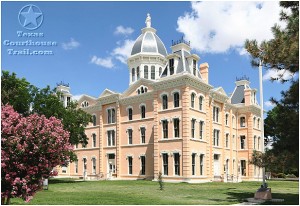 Presidio County Judge Cinderela Guevara said she declared Scalia dead via telephone based on what cops and marshals at the scene told her — that there were no signs of foul play.
Presidio County Judge Cinderela Guevara said she declared Scalia dead via telephone based on what cops and marshals at the scene told her — that there were no signs of foul play.
“How in the world can that Texas judge, not even seeing the body, say that this is a heart attack?” Ritchie wondered. “A US marshal can’t tell you. You need a medical professional. If this was Joe Blow, you say OK, 79 years of age, health problems, maybe natural causes. But this is a sitting justice of the Supreme Court!”
Scalia’s family did not want an autopsy. WHY? Wouldn’t most people in their position want or even demand one after hearing about how he supposedly died?
Talk-radio host Michael Savage said, “We need a Warren Commission-like federal investigation.” “This is serious business.”
Savage said an immediate autopsy of the body is needed.
“There was no medical examiner present. There was no one who declared the death who was there. It was done by telephone from a U.S. Marshal appointed by Obama himself,” he said.
Savage asked the question, “what would happen if Donald Trump were in the White House in his final year and the justice was Ruth Bader Ginsburg?”
“Do you think the left would be screaming that Donald Trump would have no right to appoint anyone to the Supreme Court? Do you think they would be demanding an autopsy and a full federal investigation?”
Presidio County Judge Cinderela Guevara, who pronounced Scalia dead, said the death certificate will say the cause of death was natural and that he suffered a heart attack.
She said she decided not to order an autopsy after Sheriff Danny Dominguez concluded there were no signs of foul play, reported WFAA News in Dallas. The Scalia family concurred.
“As part of my investigation, one of the things I did ask the sheriff and the U.S. Marshal: ‘Were there any signs of foul play?’ And they said, ‘Absolutely not.’ At that time, I still wanted to be careful, and asked them if Scalia’s physician would call me,” Guevara said.
Are you kidding me? What would that prove? That he was an old man and probably was ready to go anyway? Or so she could ease her conscience a bit more after knowing she did no real investigation based on what the sheriff told her?
Guevara said she talked to Scalia’s doctor in Washington, D.C., who told her Scalia had been sick and had visited his office Wednesday and Thursday before going on the hunting trip Friday.
According to Guevara, Scalia told his group Friday at dinner he was not feeling well and went to his room early. That’s completely different than what the people at his table said. “He was seated near me and I had a chance to observe him. He was very entertaining,” John Poindexter said.
The owner of the Texas ranch and resort said Scalia died peacefully. (Now, how does he know that after he found him with a pillow over his face?)
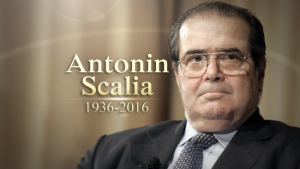 John Poindexter later told NBC News,“The judge, when I found him Saturday morning, was in complete repose,” “He was very peaceful in his — in the bed. He had obviously passed away with no difficulty at all in the middle of the night.”
John Poindexter later told NBC News,“The judge, when I found him Saturday morning, was in complete repose,” “He was very peaceful in his — in the bed. He had obviously passed away with no difficulty at all in the middle of the night.”
With the death of Justice Antonin Scalia, here are six big opinions that have huge consequence for the Obama administration:
• Same-sex marriage. In a decision likely to come on the term’s last day, possibly June 29 or 30, the court will decide whether gays and lesbians have a constitutional right to marry or whether state bans against same-sex marriage can remain in place.
Six separate cases from Ohio, Michigan, Tennessee and Kentucky have been consolidated for the court’s consideration. In them, 32 plaintiffs are asking for the right to marry or to have marriages licensed elsewhere recognized in their home states. Most legal experts predict the court, led by Justice Anthony Kennedy, will rule in favor of the gay and lesbian couples.
• Obamacare. The future of President Obama’s health care law is on the line for the second time in three years, and it’s anyone’s guess how the court will rule.
Passed in 2010 and narrowly upheld by the court in a 5-4 ruling in 2012, the law has extended health insurance to 12 million Americans. But four words in its lengthy text, “established by the state,” now endanger federal subsidies relied upon by 6.4 million participants in 34 states that did not create their own exchanges or marketplaces. The justices must decide whether the law prohibits that financial aid.
• Clean air. Environmental regulations approved by the Obama administration regularly come before the Supreme Court, and this year is no exception. A major rule requiring coal- and oil-fired power plants to reduce emissions of mercury and other toxic air pollutants hangs in the balance.
The justices appeared closely divided on the central issue in the case, whether the Environmental Protection Agency should have considered the nearly $10 billion annual cost in relation to the potential benefits before approving the regulation, when it was argued. A decision in favor of objecting states and utilities could send the EPA back to the drawing board.
• Housing discrimination. The third time could be the charm for the court’s conservatives, who tried twice in recent years to consider cases challenging the way housing bias claims are decided.
Under the Fair Housing Act of 1968, minority groups have been able to win lawsuits by showing that housing practices, such as sales, rentals, zoning and lending, have a disparate impact on minorities. Housing industry opponents challenging the law say it was intended only to ban intentional discrimination.
• Lethal injections. The death penalty also is never far from the high court’s docket. After a steady diet of cases and emergency appeals on issues such as claimed intellectual disabilities and the actions of defense lawyers and prosecutors, the court now must rule on a relatively new method of execution.
The case involves the use of a sedative called midazolam as part of a three-drug cocktail used by several states, including Oklahoma, where three death-row inmates are challenging its use. Unlike stronger barbiturates that are in short supply, the drug has failed in some cases to block pain and suffering during the lethal injection process.
• Political maps. In the second case to reach the court this year on political redistricting, the justices must decide whether nonpartisan commissions can replace state legislatures in drawing congressional district maps every 10 years.
Those commissions are used in seven states, including California, to take the redistricting process out of the hands of politicians with a vested interest. But the Arizona state Legislature’s Republican majority argued that the Constitution gives that power solely to state legislatures. A majority of the court’s justices appeared to agree during oral arguments.
Was Justice Antonin Scalia murdered to move a huge “obstacle” out of the way to make it more sure of these agendas to go favorably in this administrations way?




